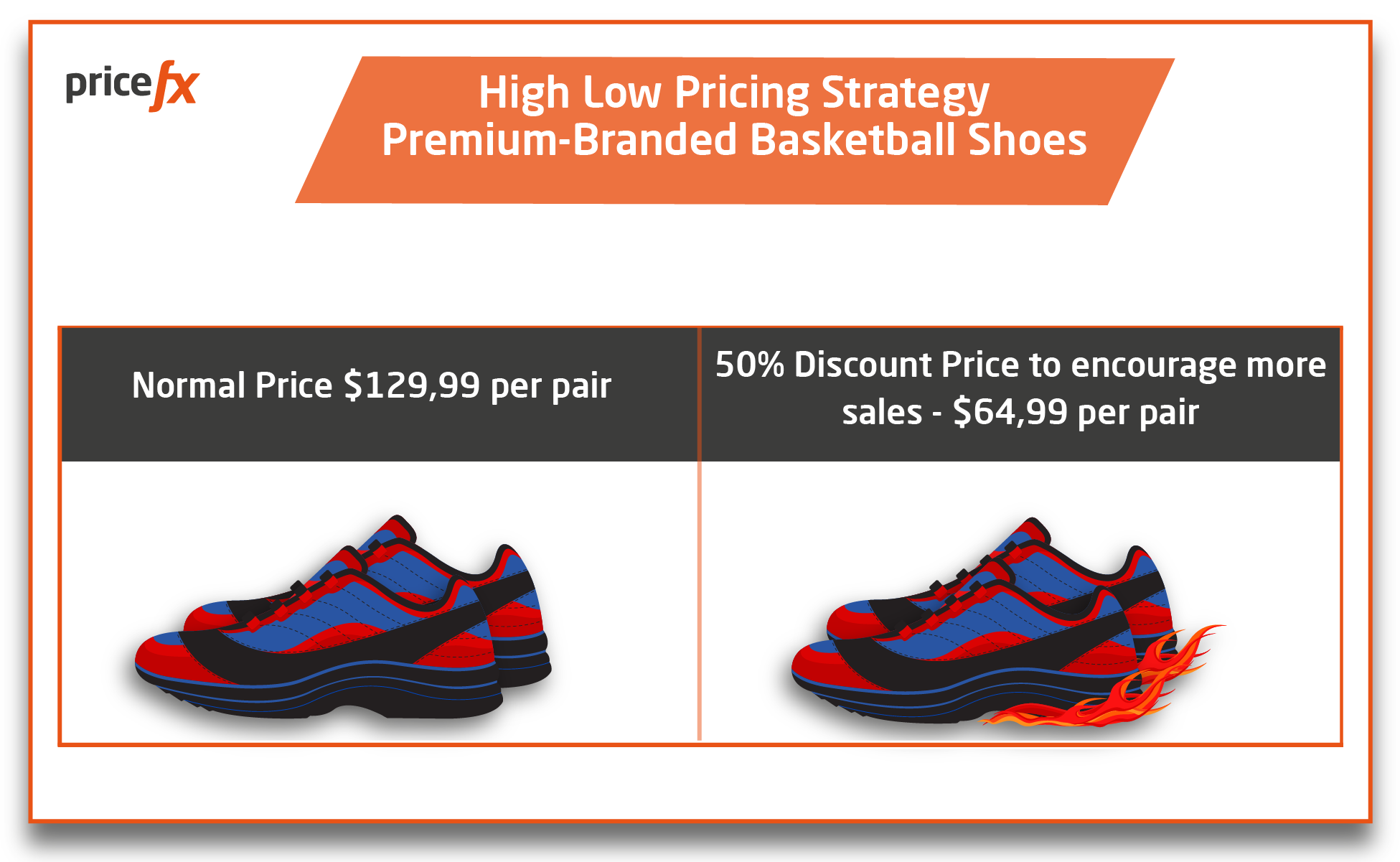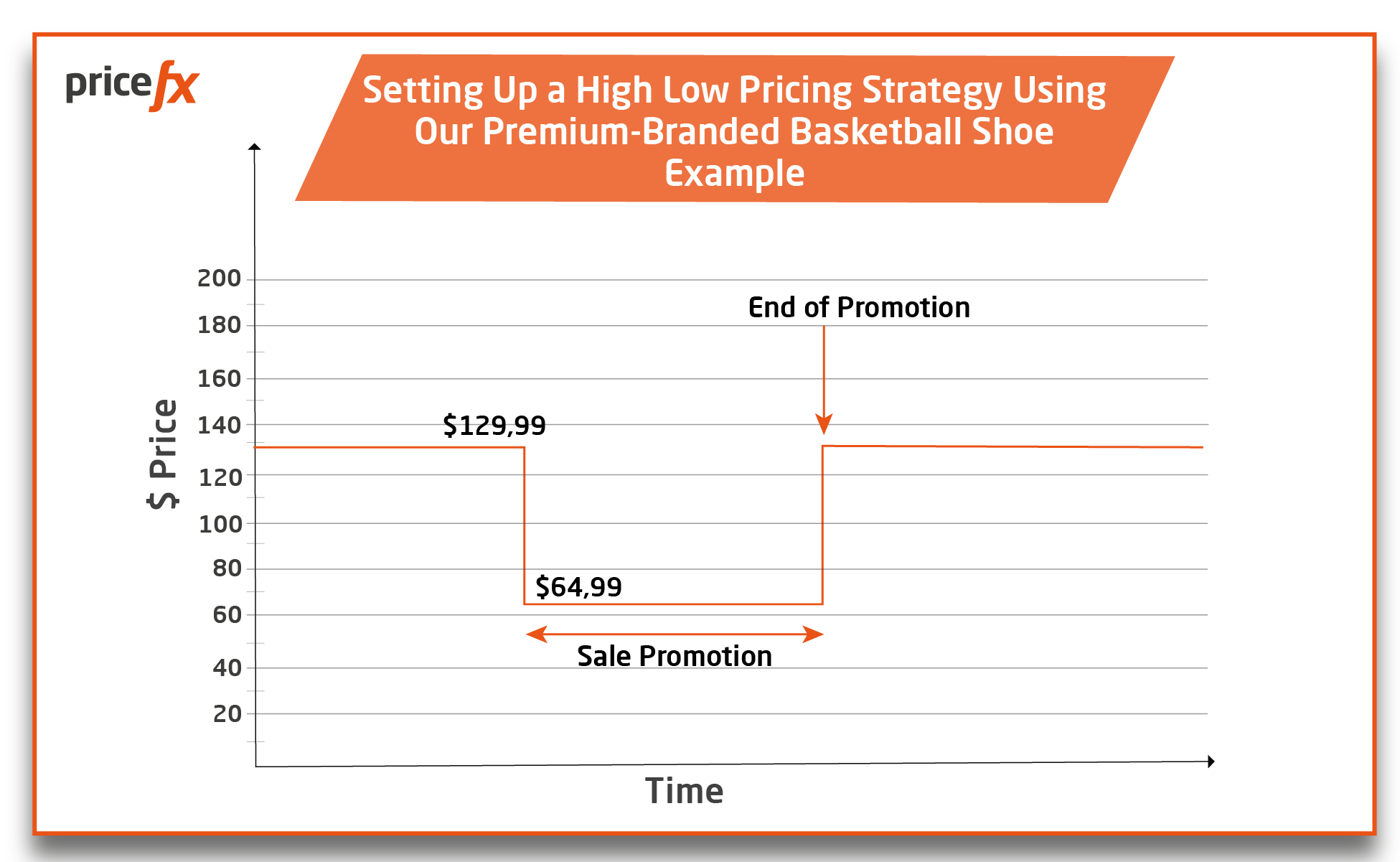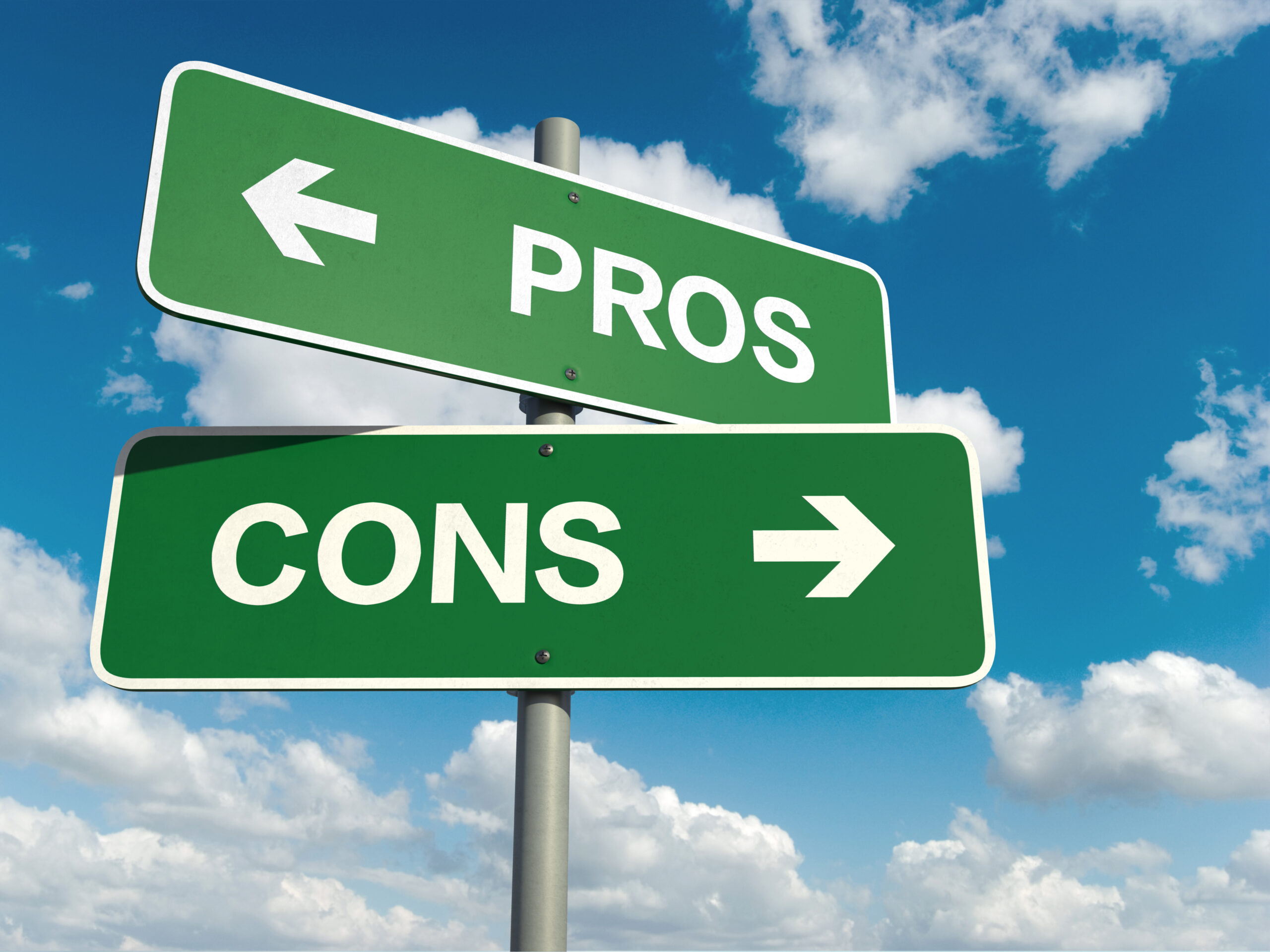High Low Pricing Strategy Explained: The Pros & Cons
April 14th, 2022 (Updated 03/10/2023) | 12 min. read
By Ken Edwards
Pricing your products and services in the Goldilocks ‘just-right’ zone is a challenge for any business. Set your prices too low, and you could potentially be leaving valuable profit at the checkout. On the other hand, by setting your prices too high, you could risk losing out on sales altogether to your competitors. Companies worldwide are increasingly using the pricing science available at their fingertips more and more and moving between different pricing strategies as the need dictates. These days there are a range of pricing models and strategies that can assist in setting precisely the right prices to suit your organization’s unique set of business objectives. In this article, we analyze just one example of the many different pricing strategies now available to businesses; High Low Pricing Strategy Explained: The Pros & Cons.
At Pricefx, over the last 10+ years, we have assisted hundreds of companies to optimize their prices and throughout that journey, we have learnt that no two businesses are exactly alike in what they require from a pricing strategy solution. After finishing this article, some of you may be excited, enthused, and ready to jump into adopting a high low pricing strategy for your business. However, some of you will almost certainly decide, ‘No way. High Low Pricing is definitely not for me.’ And that is fine, but it will be great to find out and know for one way or the other, right?
To help you decide, let’s examine exactly what a High Low Pricing Strategy is, examples of high low pricing, the strategy’s pros and cons, and tips to setting up and evaluating a high low pricing strategy, not to mention combining it with other pricing strategies.
What is High Low Pricing Strategy? – The Definition
A High Low Pricing Strategy is a widely used pricing strategy (usually in the retail industry) that allows businesses to charge more for initially introduced products and then later, sell them at a much lower price during promotional campaigns before raising prices again. These usually include seasonal deals, clearance sales, and markdowns. The primary goal of the campaign is to increase the revenue of business. Whilst it does involve a decrease in prices on products through sales promotions, it also includes re-increasing the price after the promotional period has finished.
Therefore, the goal and psychology behind high low pricing is to lure customers to visit retail stores (both bricks-and-mortar and online stores) with discounts, which might also lead them to buy other higher-priced products as a bi-product.
What’s more, when buying at the lower discounted sale price, customers can sometimes develop a ‘taste’ for the usually higher priced products and as a result continue to purchase the item at its regular higher price.
The high low pricing strategy is different from everyday low pricing strategy, which consistently uses low prices.
Because the high low pricing strategy consists of both increasing and lowering prices, overall, products priced using a high low model have a higher price cumulatively over the long run.
Setting Up a High Low Pricing Strategy – A ‘How To’ Example
Usually, companies decide to implement a High Low Pricing Strategy to grow foot traffic. When those businesses lower product prices, it theoretically attracts more customers for those products, as it is only normal that many customers simply do not want to ever miss out on a good deal. Those businesses that receive an influx of sales on the discounted products subsequently raise the rates again to boost their profit margins.
When adopting a High Low Pricing Strategy, you might begin by selling your premium-branded basketball shoes at $129.99 per pair. However, to encourage more sales, or more revenue, or have your customers develop a taste for premium-branded basketball shoes, you decide to put them on sale for a 50% discount at $64.99 per pair.

While achieving your overall sales volume objective, the customers lured into your sporting goods store by the premium-branded basketball shoes discount may also buy a Milwaukee Bucks jersey, a pack of 8 tube socks and 2 caps, in addition to the shoes.
Boom! Sales up, revenue up and a taste being developed by delighted customers for premium-branded basketball shoes. Your customers will tell their friends all about the great deal they got, and they also definitely know where to return next time when they’re in the market for premium-branded basketball shoes.
Well, that’s the theory anyway. Time to jack up those discounted prices again to increase profitability anyone?
Setting a ’Reference Price’ – The Critical Psychological Component of High Low Pricing Strategy
When using a high low pricing strategy, a reference price must be established. The reference price is a psychological construct, and it plays a critical role for the buyers, validating their perception they are getting a good deal at the substantially lower price.

For example, using our example above, the premium-branded basketball shoes have a normal selling price of $129.99. A 50% discount is applied, resulting in the low “discounted” price of $64.99.
In this context, the $129.99 price is the reference price (the cost of the item before discount).
When customers compare the ‘sale’ price to a displayed higher price (the reference price), they are more likely to buy as you’ve done their price comparison research for them.
Famous High Low Pricing Strategy Examples
Adidas Pricing Strategy & Nike Pricing Strategy

High low pricing strategy is often used by sportswear and sports shoes retailers like Adidas and Nike.
With both the Adidas Pricing Strategy and Nike Pricing Strategy, it has become usual to see price drops during the holiday season (usually kicking off with massive Black Friday bargains in November) and prices held low through to New Year in a promotional campaign. Prices are then raised again after the promotional period ends and may stay high for that mother of all US sporting events, the Super Bowl.
The high low pricing strategy is also extensively used in the fashion industry by companies such as Macy’s and Nordstrom. The high low pricing strategy is not exclusively used in the sports shoe and fashion industry, but also in a range of other industries.
However, regardless of the industry, the pricing strategy theory is similar: sell off-season goods, retain customers, and acquire new prospects to assess the quality of the products at a reduced price.
JC Penney Pricing Strategy
JC Penny is a case study in how high low pricing is worthy of consideration, and once adopted, you may have to stay the course. After successfully using high low pricing for more than 100 years of operation, the leading U.S. department store chain abandoned it after Ron Johnson took over the leadership of the group.
Arriving at JC Penney from his previous position as the creator of the Apple store concept, Johnson dropped JC Penney’s high low pricing strategy by eliminating promotions and discounts and replacing them with an everyday low pricing strategy. While it was not the only change that Johnson made, the change in pricing strategy had an enormously negative impact on JC Penney’s consumer traffic and sales.
Eventually, Johnson was fired and JC Penney reverted to its century-old model of high low pricing.
The JC Penney example goes to show that not only do you need to know what motivates your customers, you need to remain aware that communicating price changes will be key to the success of any pricing strategy.
The Pros & Cons of High Low Pricing Strategy

The Pros of High Low Pricing Strategy
There are several benefits to think about when considering if you should employ a high low pricing strategy in your business;
Increased profitability
One of the primary advantages of a high low pricing strategy is that it can increase your organization’s overall profitability. As discussed above, when customers are presented with opportunities to buy products at a decreased or discounted prices, they might also purchase full-price items while shopping. Whilst the increased sales can also occur in online stores, this feature of the high low pricing strategy is especially prevalent in bricks-and-mortar retail stores that maintain their sales floor stocked with inventory. Customers visit in-store with the intention of simply purchasing an item that they see being sold at a discounted rate and end up making additional purchases after browsing in-store.
Creates Brand Excitement & Increases Store ‘Foot Traffic’
Companies using high low pricing strategy can generate a lot of consumer excitement around their brand thanks to the “buy it while it’s on sale” buzz and atmosphere.
What’s more, customers naturally flock to stores, both online and offline, when a price drop is announced on a previously high-priced product. The better the discount, the more likely that consumers will share the price-drop news with friends, family and work colleagues.
Bundle Products and Clear Inventory
By bundling out-of-season products, you may trigger plenty of impulse buys to clear inventory and take the storage costs of those items out of your costs. Convince shoppers to buy two or more of something, (‘buy 2, get 1 free’ etc.) welcomes them to the clearance rack and builds your sales volume and revenue in the process.
A Recyclable Marketing Strategy
Businesses using a high low pricing strategy need to consistently advertise the products they plan to sell at a discounted price, thereby putting in place an established marketing strategy to accompany the pricing strategy.
As the business rotates through a constant changing of which products a company lowers its prices for, the marketing strategy from one round of promotions or coupons can be recycled repeatedly for the next batch of discounted products. Having a ready-made marketing strategy in place can save a business a bunch of time and money, rather than putting a new strategy in play.
Expand Your Customer Base & Retain Existing Customers
Another benefit to a high low pricing strategy is in its potential to attract new customers to the business. Using advertised discounts and promotions on offer with a high low pricing strategy, customers may choose to visit your business even if they have never done so before.
Companies that choose to implement a high low pricing strategy may also have a greater chance of retaining their existing customers, who may keep coming back to repeat their usual purchases and explore new discounted items when doing so.
The Cons of High Low Pricing Strategy
Although the advantages make the strategy appear like a ‘no-brainer’, businesses also considering the implementation of a high low pricing strategy will also need to weigh up several potential disadvantages, such as;
Customers Waiting for Deals Can Affect Profitability
If you run high low pricing strategy promotional campaigns on a regular or on-going basis, your customers may become accustomed to discounting and wait for the deals to pop up because of your lure of much lower prices on offer, which can hurt your revenue and profitability in the long run.
Customers Can Doubt Your Product Quality
Customers are sometimes much savvier than you give them credit for. Your clients are fully aware that there is no such thing as a free lunch. Big discounts on a regular basis may make them question the quality of your products, and they may ultimately become suspicious of your brand.
Cost of advertising
As a high low pricing strategy typically depends on the continuous advertising of discounted products, businesses that choose to use it usually spend considerable sums of money on promotional and advertising campaigns. As the products offered at low prices change regularly, that means the ongoing marketing expenses for businesses can be heavy.
Tips to Evaluate High Low Pricing Strategy
The high low pricing method is a widely used one, however, discerning tech-savvy online shoppers are more than capable of tracking down lower-priced items elsewhere, and so will only buy the low-price items and will avoid the high-price items. Also, a business that persistently offers high prices on the bulk of its products will not garner much customer loyalty. Your retail industry competitors that use everyday low pricing for all or most of their products can compete effectively against this strategy.
To combat this, using data to track your customer’s buying patterns is critical plus using a range of pricing strategies in combination. Unless your business is a simple one and not complex (a rarity in these dynamic and changing times for any business), you’ll need to consider a range of pricing strategies to use hand-in-hand and/or swap between over time. The more complex your business is, the more potential that using multiple pricing strategies together will not only help your organization succeed but may become a necessity in the future as the business world intensifies in its complexity.
Pricing Software is the most efficient way to gather and action your data. Customer data, Product data and Sales and Transactional data are the core of any pricing project from price setting to price analytics, price quoting, rebate management etc., in addition to implementing different pricing strategies. Rather than constantly monitoring competitors’ prices and adjusting your own company’s price lists, pricing software can also help you automate strategic pricing decisions, rather than manually collecting competitor data.
Now you know that pricing software can assist you in implementing your high low pricing strategy and combining it neatly with other strategies, you’ll want to continue your learning journey.
Check out the article link below to learn more about the steps to take in order to implement your bcompany’s customized pricing strategy;
